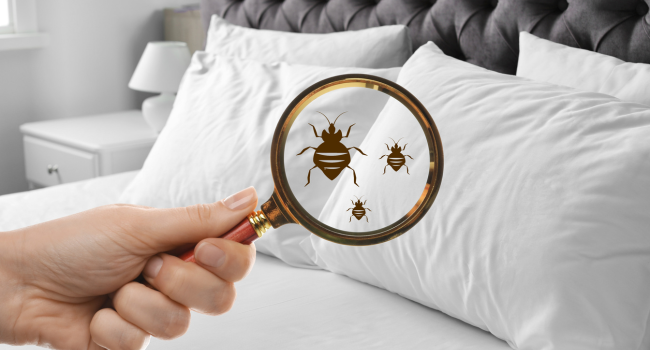Bed bugs can be a real nuisance in our homes. Spotting them early can make a big difference. Let’s explore how to identify the early warning signs of a bed bug problem. These tiny pests often leave clues. Dark spots on your sheets or mattress are one sign. It could be their droppings. Small blood stains on your bedding might also point to bed bugs. Bites on your skin are another hint. They often appear in clusters or lines. A musty smell in your room could mean a bigger infestation. Checking furniture crevices and mattress seams can help. Finding bed bugs early makes treatment easier. It’s important to know when to call for help. That’s where pest control margate comes in. They can offer guidance and solutions. Understanding these early signs can save time and stress. Let’s take these steps to regain peace in our homes.
Recognizing Physical Signs
Look for dark spots on your mattress or sheets. These are often droppings left behind by bed bugs. You might also notice small blood stains. This can happen if you crush a bed bug while sleeping. Another key indicator is skin bites. They are usually itchy and red. These bites often appear in clusters or a straight line.
Understanding Bed Bug Behavior
Bed bugs are nocturnal. They hide during the day and come out at night to feed. This makes detecting them a bit tricky. They hide in small crevices and seams of mattresses. They also seek shelter in cracks in bed frames or behind headboards. Knowing where they hide helps in tracking them down.
Detecting Odors
A musty, sweet smell in your room could mean bed bugs. This odor comes from their pheromones. If the smell becomes noticeable, it may indicate a significant infestation. This is especially true if other signs are present.
Comparing Bed Bug Signs
| SIGN | DESCRIPTION |
| Dark Spots | Droppings left on bedding |
| Blood Stains | Tiny red stains on sheets |
| Skin Bites | Clusters or lines of itchy, red bumps |
| Musty Odor | Sweet, musty smell indicating larger infestations |
Checking Furniture and Mattresses
Thoroughly inspect your sleeping area. Check mattress seams and bed frames. Look behind headboards and underneath box springs. Use a flashlight to inspect these areas closely. Bed bugs are small and flat, making them easy to miss.
When to Seek Professional Help
Spotting any combination of these signs means it’s time to act. Early detection is key to managing bed bug problems. If you confirm their presence, consider professional help. Experts in pest control can offer effective solutions. They can assess the extent of the infestation and recommend treatments. For more guidance, refer to this resource from the U.S. Environmental Protection Agency.
Preventing Future Infestations
Once handled, prevention becomes important. Keep clutter to a minimum. This reduces hiding spots for bed bugs. Regularly wash and heat-dry your bed sheets, blankets, and any clothing that touches the floor. Vacuum your home often. Pay special attention to areas around your bed and furniture.
Understanding Bed Bug Habits
Knowing a bit more about bed bugs helps in prevention. History shows they have been household pests for centuries. They can survive months without feeding. This resilience makes them difficult to eliminate without proper measures. For comprehensive prevention strategies, check the Centers for Disease Control and Prevention guide.
Conclusion
Bed bugs can disrupt the comfort of our homes. Spotting early warning signs is crucial. Recognizing physical signs like spots, stains, and bites helps. Understanding their behavior and detecting odors are important too. Checking your furniture and mattresses is a proactive step. When signs appear, consulting a professional is wise. Prevention following treatment is essential. With knowledge and vigilance, we can take back control from these unwelcome guests.
